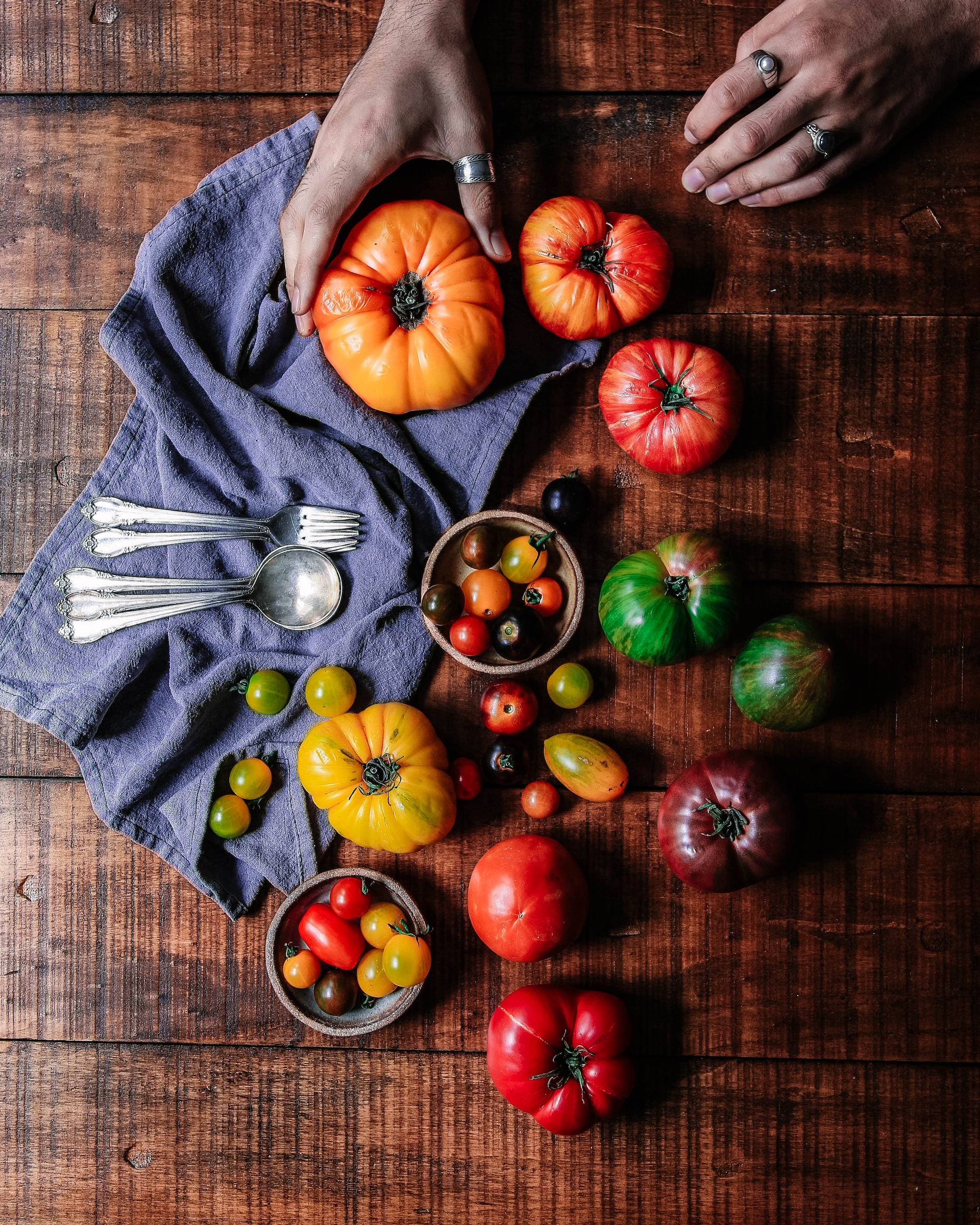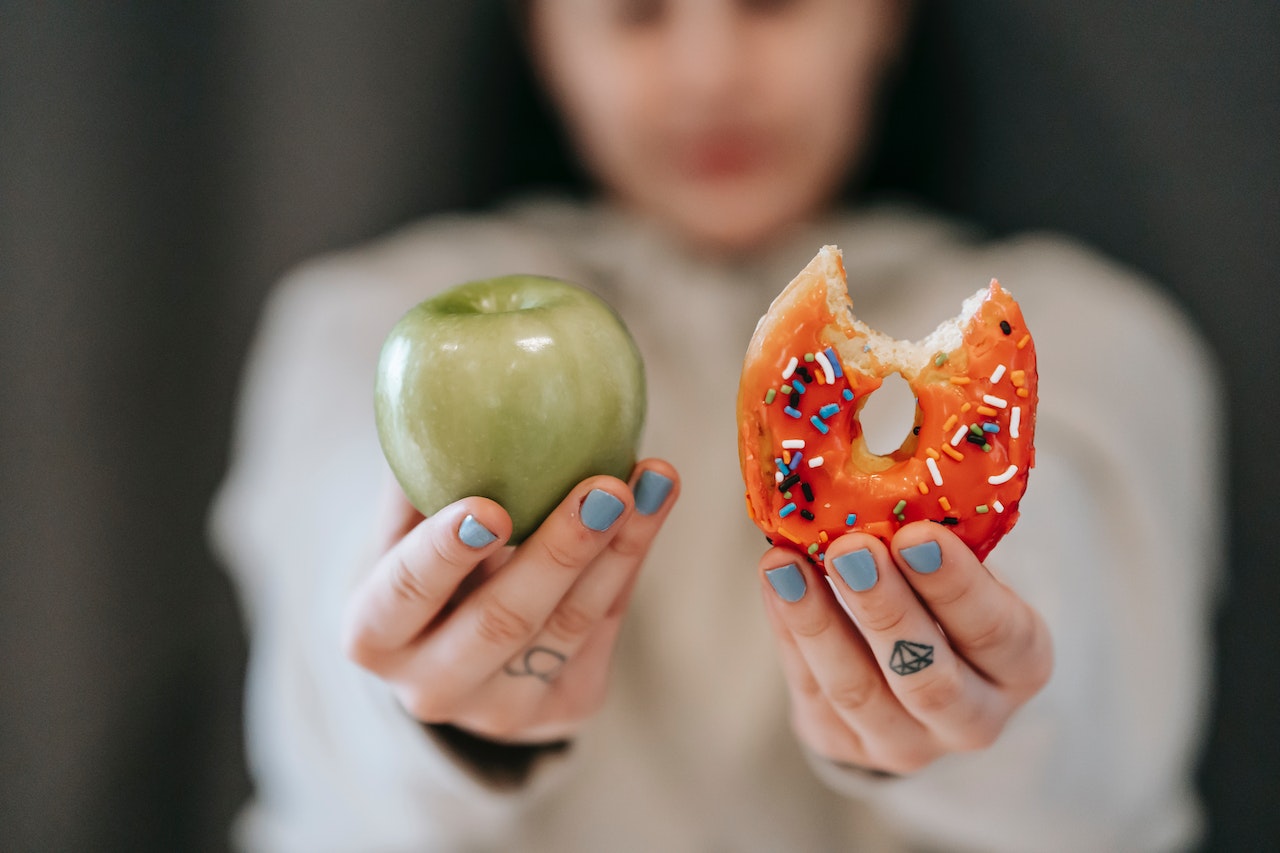Nutrition is rife with controversy and debates on meat, dairy, grains, and even lentils! But there is little debate on whether one should eat their fruits & vegetables.
And it’s no wonder why! Fruits and vegetables are full of nutritious anti-inflammatory nutrients called antioxidants which is the cornerstone for health and longevity. There’s a growing amount of evidence showing the protective benefits of these foods (without all the nasty side effects), for chronic diseases, especially when it comes to heart disease – the leading cause of death in North America.
In 2017, the World Health Organization (WHO) attributed 3.9 million deaths globally to be a result of inadequate produce intake
However, only 10-16% of North Americans eat enough according to the the Centre for Disease Control (CDC). Their most recent report found that men (10.1%), younger adults, and low-income adults (6.8%) had the lowest intake of fruits and vegetables. The highest rates were found in ethnic groups (16.4%), and adults over 51 years (12.5%).
The guidelines for 2022-2025 are that adults should consume a minimum of 2 cups of fruits and 2-3 cups of vegetables daily. This is the recommended intake to build up a healthy immune system (and reduce autoimmune diseases), prevent obesity and type 2 diabetes, cardiovascular disease, and some cancers.
Reports from the National Health and Nutrition Examination Survey which found that 80% of people lacked diversity in fruits and vegetable colours in their diet.
Plants produce pigmented phytochemicals that offer a wide spectrum of healing and rejuvenating properties to the human body and mind. No only that, but each colour correlates to a specific health benefit which can be a fun factor in determining your food choices, and an interesting conversation with kids!
Red – for Reducing Cancer Risk
- Tomatoes*
- Apples
- Beets
- Cherries
- Cranberries
- Raspberries
- Red bell peppers
- Red onions
- Pomegranate
- Watermelon
Red produce contains lycopene which suppresses cancer cells. Research on prostate cancer found that dietary intake of lycopene lowered the risk of prostate cancer. Lycopene has also shown anti-cancer effects by inhibiting the growth of cancer cells. The lycopene in cooked tomatoes is 4 times higher than in raw tomatoes (enjoy that pasta sauce!) In human and animal studies, studies found that watermelon, cranberries, cherries, pomegranate, apples, raspberries can support immune function, reduce infections and lower inflammation.
Orange – for Hormone Health
- Apricots
- Carrots
- Oranges
- Pumpkin
- Squashes
- Sweet potatoes
Orange comes from the antioxidants called carotenoids (think carrots 🙂 which is essential for vision and immune health. Numerous studies have also tested the impact of carotenoids on hormone and reproductive health and found that one or more servings of citrus fruits daily had 22% lower risk for endometriosis (a condition associated with painfully debilitating menstrual cramps) compared to those women who ate one serving or less per week. A study done in 2016 found that women who ate 400 mcg (one large tangerine) of orange pigmented foods each day delayed the aging of ovaries which leads to more severe menopausal symptoms.
Yellow – for Gut Health
- Bananas*
- Lemons
- Ginger
- Pineapples
- Spaghetti squash
- Corn
- Yellow beets
- Yellow bell peppers
This category of colours contains foods that are more starchy! For example, bananas are a major source of resistant starch, aka fiber, and the more unripe it is, the more fiber and less sugars. These fibers function under the common name of “prebiotics” which help feed your healthy gut bacteria. Well-fed and abundant gut bacteria produce the most potent anti-inflammatory molecules (short chain fatty acids) which are associated with anti-inflammation, anti-cancer properties, immunoregulatory, anti-obesity, anti-diabetes, cardioprotective, neuroprotective (brain protection), and hepatoprotective (liver protection). Ginger is wildly used in cooking for not just it’s warming punchy flavour, but also for its soothing effect on nausea, bloating and indigestion.
Green – for Heart Health
- Broccoli
- Kale
- Brussels sprouts
- Arugula
- Spinach
Cruciferous vegetables like broccoli (and its sprouts), kale and brussels sprouts contain sulforaphane which is a powerful anti-inflammatory property. Meta-analysis of green leafy vegetables and cruciferous vegetables show a lower risk of atherosclerosis and reduced cardiovascular diseases with daily consumption. They also have a positive effect on cholesterol and blood pressure markers which keep our blood vessels healthy and elastic!
Blue/ Purple – for Brain Health
- Eggplant
- Beets
- Currants
- Blueberries
- Blackberries
- Red cabbage
- Red Kale
Most people are lacking this hue when it comes to their daily meals. Incorporating blueberries for example has been proven to help with brain health. A study in the European Journal of Nutrition showed older adults who added wild blueberries to their daily diet for three months had more accurate memory recall and faster cognitive processing function. Wild blueberries offer almost three times more nutrition and antioxidants than regular blueberries, so are the best bang for our buck. Frozen fruits and vegetables are just as good, if not better than fresh as they are picked at peak ripeness and are protected from spoiling. The cost savings are also significant when it comes to fresh vs. frozen. On average fresh berries cost $4 per serving, while frozen is $0.75 per serving.
White & Brown – for Immune Defence
- Cauliflower
- Fennel
- Leeks
- Artichokes
- Jicama
- White nectarines
- Garlic
- Mushrooms
While they lack the attractive hues of their pigmented counterparts, they make up for in nutrient density like B vitamins, selenium, and folate. Selenium is needed for immune support and those with deficiencies are more prone to infections and predisposed to cancer. The phytonutrient in garlic is called allicin which you can smell when you crush a fresh clove of garlic for your mushroom sauté. Cell studies show its beneficial effects on immune health which causes zinc to be released from proteins in our body which can help activate our immune system.
Plant nutrients work synergistically, each contributing like a puzzle piece to a whole picture of health and wellness. They are stronger and more productive (and beautiful) together than alone.
So next time you sit down to eat, look down at your plate. Note if you see shades of beige, and see if can incorporate a pop of colour. Maybe it’s to add some berries, pomegranate, or a dollop of pumpkin puree to your morning oats, some spinach, mushroom, avocado, or kimchi to your omelette, or blend in some beets with that hummus for an easy showstopper at your next event! See if you can incorporate each colour into your daily rotation from the beautiful spectrum of colours nature offers us.
Reference:
Lee SH, Moore LV, Park S, Harris DM, Blanck HM. Adults Meeting Fruit and Vegetable Intake Recommendations — United States, 2019. MMWR Morb Mortal Wkly Rep 2022;71:1–9. DOI: http://dx.doi.org/10.15585/mmwr.mm7101a1external icon
Nutrition facts: Lycopene benefits: raw vs. cooked tomatoes. Retrieved from https://nutritionfacts.org/video/lycopene-benefits-raw-vs-cooked-tomatoes/#:~:text=Lycopene%20is%20the%20wonderful%20cancer,more%20lycopene%20than%20raw%20tomatoes.
Whyte AR, Cheng N, Fromentin E, Williams CM. A Randomized, Double-Blinded, Placebo-Controlled Study to Compare the Safety and Efficacy of Low Dose Enhanced Wild Blueberry Powder and Wild Blueberry Extract (ThinkBlue™) in Maintenance of Episodic and Working Memory in Older Adults. Nutrients. 2018 May 23;10(6):660. doi: 10.3390/nu10060660. PMID: 29882843; PMCID: PMC6024810.
Xiong RG, Zhou DD, Wu SX, Huang SY, Saimaiti A, Yang ZJ, Shang A, Zhao CN, Gan RY, Li HB. Health Benefits and Side Effects of Short-Chain Fatty Acids. Foods. 2022 Sep 15;11(18):2863. doi: 10.3390/foods11182863. PMID: 36140990; PMCID: PMC9498509.
Photo Credit:
Photo by Edgar Castrejon on Unsplash


